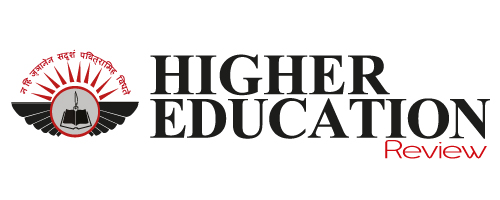Research, Innovation and Collaboration Driving Higher Education
 Collaboration fosters innovation, knowledge exchange, and interdisciplinary breakthroughs, ultimately elevating academia to new heights. Bridging disciplinary gaps and creating knowledge networks promotes a collective approach. That can propel higher education into a realm of enriched scholarly output. By pooling the intellectual resources of diverse minds, academia can achieve a level of innovation and problem-solving prowess that transcends the limitations of individuals.
Collaboration fosters innovation, knowledge exchange, and interdisciplinary breakthroughs, ultimately elevating academia to new heights. Bridging disciplinary gaps and creating knowledge networks promotes a collective approach. That can propel higher education into a realm of enriched scholarly output. By pooling the intellectual resources of diverse minds, academia can achieve a level of innovation and problem-solving prowess that transcends the limitations of individuals.
India’s current research & innovation landscape and challenges:
India’s research ecosystem shows limited collaboration among academia, industry, and government. Low R&D budgets and insufficient industry investment limits research infrastructure and quality.
Boosting research and innovation can be achieved by increasing the industry-academia partnerships and improving the regulatory landscape, including intellectual property laws.
A multifaceted approach involving academia, industry, and government is needed to transform India into a globally competitive research hub, with better funding and international collaborations.
Collaboration between industry and academia is vital for fostering innovation and ensuring that research outcomes have real-world applications. The regulatory framework in India has also been evolving to support research and innovation. Initiatives like NEP 2020 and the establishment of the National Research Foundation (NRF) are steps toward creating a more research-friendly environment. Bridging the gaps in intellectual property rights (IPR) laws, patent procedures and the overall regulatory landscape is crucial in streamlining and promoting robust research collaboration in India.
Double accreditation, financial aid, and Connectivity to the Employment Market
NEI is an example of a disruptive trend in higher education. Some universities have already been transformed for the future. For instance, some universities offer modular, digital-only courses, with available materials in the form of written, video, and recorded content, offering double certifications in partnership with other universities. These universities understand the non-existent likelihood of students participating in scheduled courses, allowing them to study at their own pace, considering different circumstances such as working at other jobs, preferences to study at night, or living in other countries. Such digital universities often collaborate with other universities and offer double accreditation, financial aid, and connectivity to the employment market, special guest appearances, case studies, and special work terms with participating companies.
The future of research lies at the intersection of disciplines, for example, AI with humanities, Fashion with technology, Design with materials science, Environment with engineering and so on.
Institutions that break down departmental silos are leading in innovation. Innovation is shifting from isolated centres to a campus-wide ethos that encourages experimentation and student-led innovation and entrepreneurship. Teaching-learning pedagogies are increasingly expected to address real-world challenges such as sustainability, digital transformation and demonstrate measurable social and economic outcomes.
Accelerating Innovation by partnering with industry to co-create curriculum
Universities are leveraging emerging technologies by incorporating Artificial Intelligence & data analytics and Extended Reality (XR) for immersive learning. Innovation accelerates when higher education partners with industry to co-create curriculum. Industry-academia partnerships can be extended in setting up innovation labs and accelerators, support internships and live projects, enable technology transfer and commercialization.
To thrive in the evolving higher education ecosystem, institutions’ focus must prioritize outcome-based research and strengthen innovation ecosystems. There is a need to create flexible policies that encourage collaboration. To remain relevant and future-ready all HEIs must invest in faculty and student capacity and embrace digital transformation, strategically
Research, innovation, and collaboration are no longer optional - they are the driving forces shaping the future of higher education. Institutions that cultivate these pillars will be better positioned to produce impactful knowledge, nurture future-ready learners, and contribute meaningfully to society.
About The Author:
Dr Bhawana Chanana is a PhD in Fabric and Apparel Science from the University of Delhi. She has teaching and research experience of 27 years with Delhi University. She is the founder Director of Amity School of Fashion Design & Technology at Amity University Mumbai, serving since 2015. Her teaching experience spans subjects like Design research, Fashion technology, Textile processing, Fabric science, Apparel & Textile Design, IPR. She has been on the advisory board and jury panels of various eminent Fashion & Textiles Institutes.

